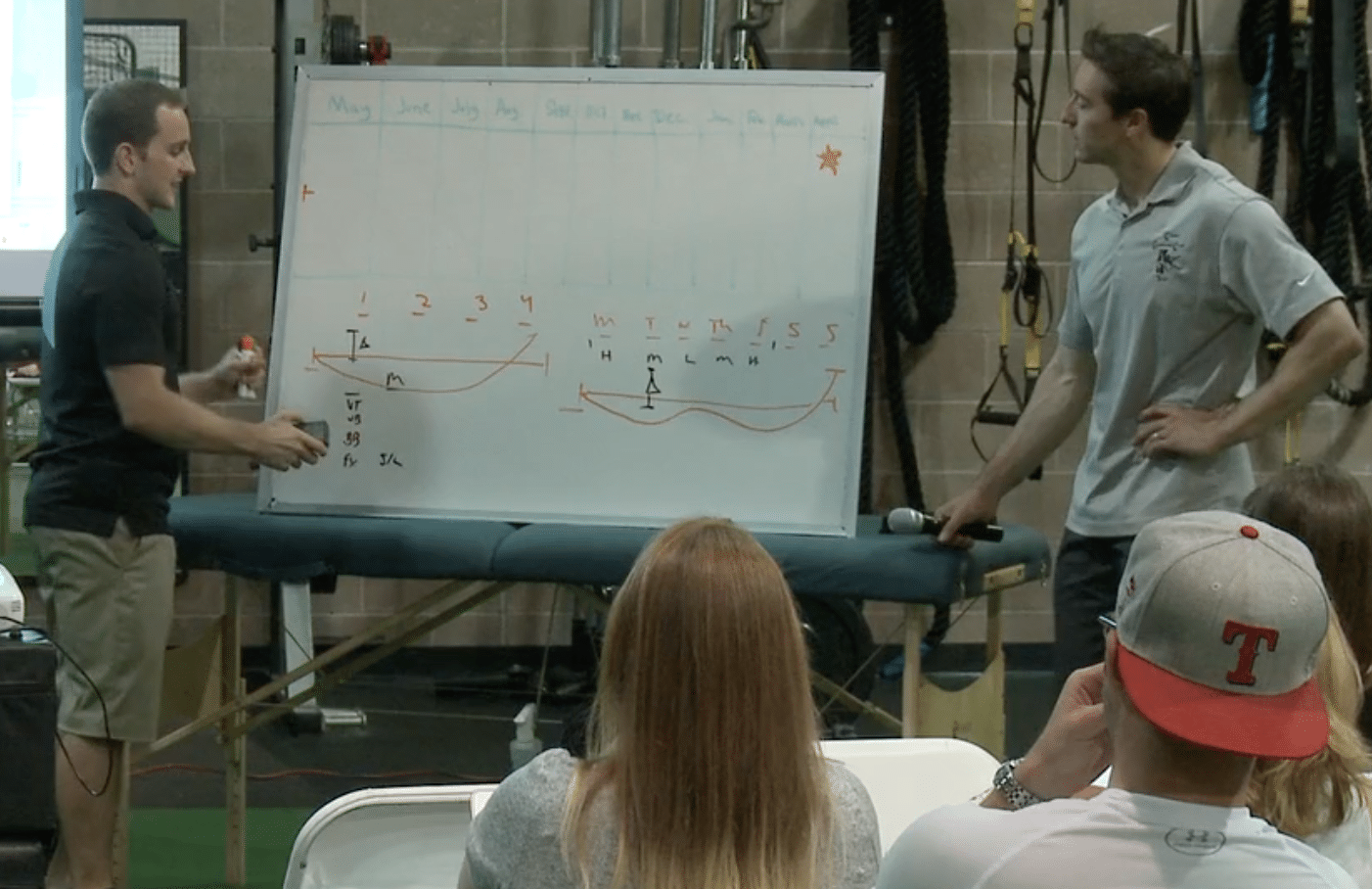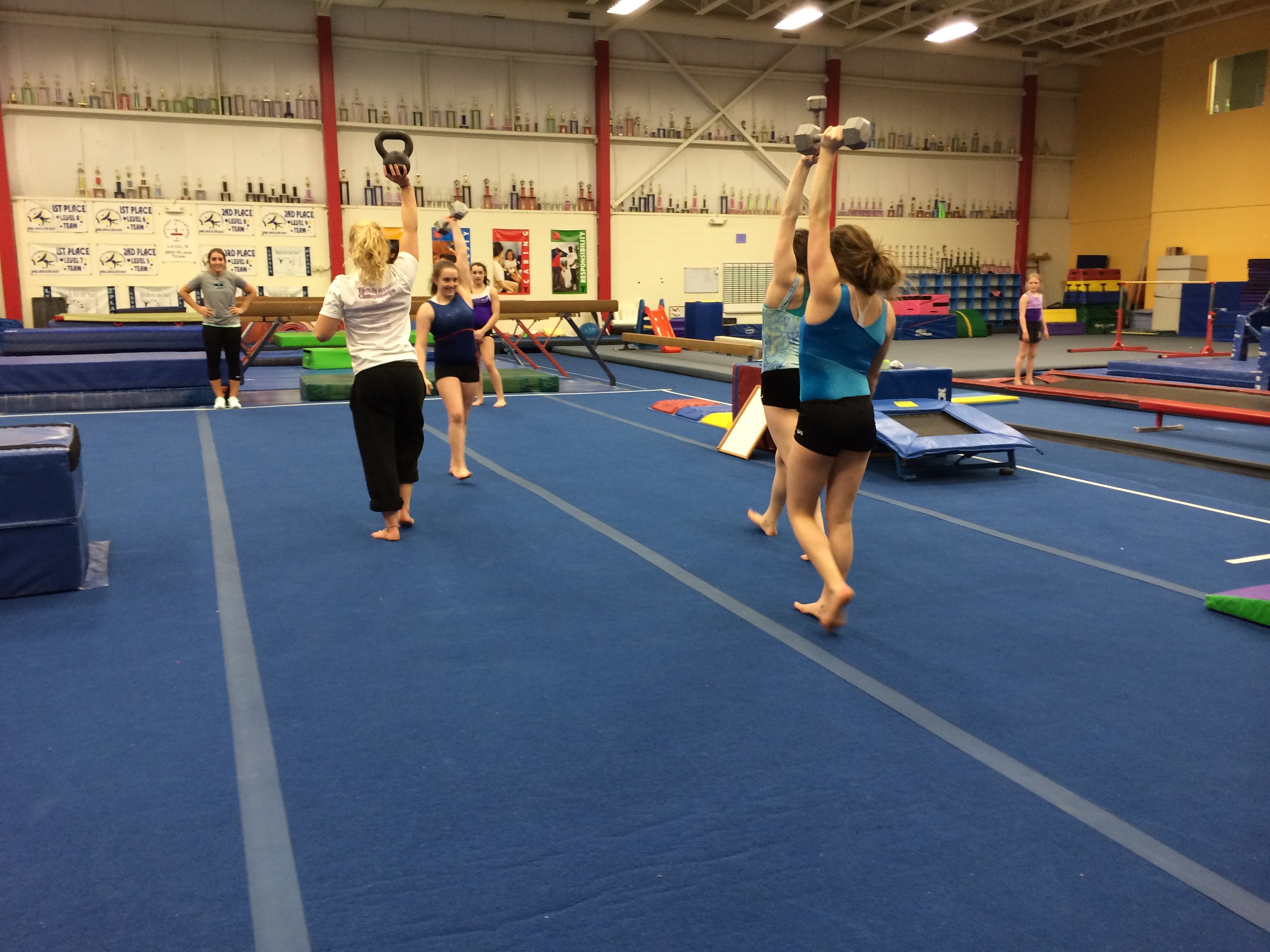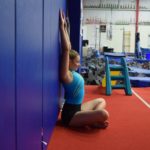The #1 Cause of Overuse Injuries and Burnout in Gymnastics, and How To Help
Every year I get a huge influx in emails from coaches and parents regarding their gymnasts having large spikes in overuse injury rates and burnout. They also report a lot of fatigue in their gymnasts, saying that despite their best efforts the gymnasts they work with are not performing well at big meets.
Many coaches (and gymnasts themselves) say they fell like they are “falling apart” physically and mentally, accumulating overuse injuries or frequent illnesses, and are totally burnt out from the competitive season. What’s even worse is, sometimes these smaller injuries turn into much bigger season-ending injuries (back fracture, Achilles tear, unstable shoulders) or when the fatigue / constant injury battles become so overwhelming, the gymnast throws the towel in and decides to quit. You may think this is a drastic escalation, but it is way more common than you think.
In a time of upcoming championship season when gymnasts want to be performing at their best, they often feel physically and mentally at their absolute worst. As a former gymnast, I know this feeling all to well as myself and teammate friends of mine felt destroyed at the end of each college season. Now like clockwork during this time of the year, I see the same common pattern repating itself in both the gymnasts that I coach and gymnasts that I treat at Champion.
Coaches, gymnasts, and medical providers (myself included) feel really frustrated by these problems during practice. Although they care about their gymnast’s health, coaches feel overuse injuries are constantly getting in the way of what they want to work on in practice to help gymnasts reach their goals. Gymnasts feel like they have “nothing left in the tank” and can’t do what is asked of them at practice, leading them to become upset as well. Many medical providers and parents are then caught in the middle trying to do anything they can to make the gmynast feel and perform better.
Coaches and gymnasts feel they have worked so hard to get new skills or upgrade routines through the first half of season, only to feel like the rug is being pulled out from underneath them due to nagging injury and fatigue. It is a very tricky situation to navigate for everyone, as you want a gymnast to perform well but also always have their physical and mental health as a priority.
The interesting part about this very common, yearly occurrence in gymnastics is that I really don’t think it has to be this way.
In my opinion, the number one reason for this yearly spike in overuse injuries, burnout, and sensation of “falling apart” is a lack of proper planning for the entire gymnastics calendar year.
If we are not taking a big step back to plan for the gymnastics training year, it is very easy to run gymnasts into the ground (or let them run themselves into the ground). It almost always happens by accident, as many coaches and medical providers push gymnasts more so to help them reach their goals. However in this situation of pushing for performance, it is very easy to lose track of multiple back to back hard training days, the numbers of skills/routines gymnasts are asked to do per week, and the lack of rest/recovery they get with meets being every weekend. This is where problems spark from.
To help explain this concept and offer some ways to combat this common problem, here is a video clip from our new online course “Keys to Developing Flexibility and Strength in Gymnastics” that explains more.
.
As a younger coach and medical provider I am 100% guilty of making the errors I talk about in the video, simply “going hard” every day and telling my gymnasts that just need to be tougher. It took me a few years of coaching gymnasts, treating them for injury, and reading research on stress response have some serious light bulb moments (and some “face palm” moments).
I can tell you with full honesty and transparency, applying the concepts outlined in the video for the gymnasts I coach and gymnastics clients I treat for injuries has been absolutely game changing. When implemented properly, the increase and performance and reduction in injury rates/burnout is staggering.
Granted, with a sport as demanding as gymnastics there is a high amount of grit needed to get through weekly practices and put the time in to get harder skills and hit routines. There is also a degree of competitive fatigue and overuse based soreness that is inevitable in every sport. I totally get that, but that is nothing compared to what is currently hindering so many gymnasts.
.
Get The Education and Tools You Need to Reduce Overuse Injury and Burnout in Gymnasts
This conversation is totally just the tip of the iceberg on ways to combat the incredibly high rates of overuse injuries and exhaustion/burnout rate the exists in gymnastics. There is so much that can be done to help the sport of gymnastics improve these areas that often causes a ton of problems for coaches, medical providers, parents, and gymnasts. By learning more about these concepts and how to practically implement them in the gym, we can help gymnasts lead longer, more successful, and healthier careers in the sport.
If you are interested in learning more about this concept, as well as cutting edge gymnastics flexibility, strength training, power development, and cardio techniques be sure to check out the brand new online gymnastics course that was just launched this week. Rupert Egan and I collaborated to take our last 5 years of work, and put it into an online course everyone can learn from. The best part is, it can happen right from your couch at your own pace, no travel or hotels needed. To learn more, check it out below.
For now, I hope this information as been really helpful. Best of luck to everyone as you roll into the end of your season! Take care,
– Dave Tilley DPT, SCS, CSCS
CEO/Founder of SHIFT Movement Science and Gymnastics Education










